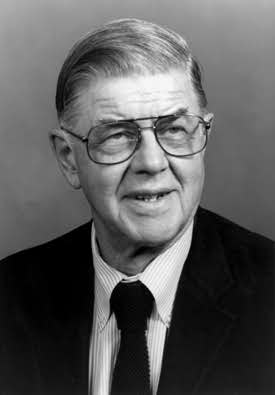John B. MacChesney Sr.
About
In Memoriam: John B. MacChesney Sr., 1929 - 2021
Sep 30, 2021

John B. MacChesney, recipient of the John Tyndall Award (1999) and one of the forefathers of optical fiber technology, passed away on 30 September 2021 at the age of 92. He is most known for his invention of the modified chemical vapor deposition (MCVD), a vapor deposition method for the manufacture of high-performance optical fibers and lightguides.
Prior to his contributions to optical communication, MacChesney received his Bachelor of Arts degree from Bowdoin College in 1951. He also served in the U.S. Army during the Korean War, and after went to study at the City College of New York and New York University. He then went to Penn State University where he received his PhD in geochemistry. After graduation, he joined Bell Laboratories where he worked on examining the electrical and magnetic properties of ceramics and single crystals. By 1972, he looked to glass, specifically to produce vitreous silica of purity and configuration needed for optical fibers. MacChesney and his colleague P.B. O’Connor would then invent the MCVD process.
MacChesney received numerous awards and recognitions for his contributions. He holds more than a hundred domestic and foreign patents under his name. In 1999, he received the John Tyndall Award for his contributions to optical-fiber technology from Optica and the Institute of Electrical and Electronics Engineers (IEEE). In that same year, Bell Labs honored him with the Charles Stark Draper Prize, the highest honor in the engineering profession. MacChesney was also a member of the World Academy of Ceramics which awarded him the Ceramics Prize in 2000 for his achievements in translating sol-gel science into real technology and the development of large size sol derived glass bodies tailored to optical fiber production.
Outside of his scientific endeavors, he collected antique cars and spent countless hours restoring them.
MacChesney was a pioneer in optical fiber communications and the development of manufacturing processes that made the telecommunications revolution possible.
Optica and the scientific community mourn his loss.
